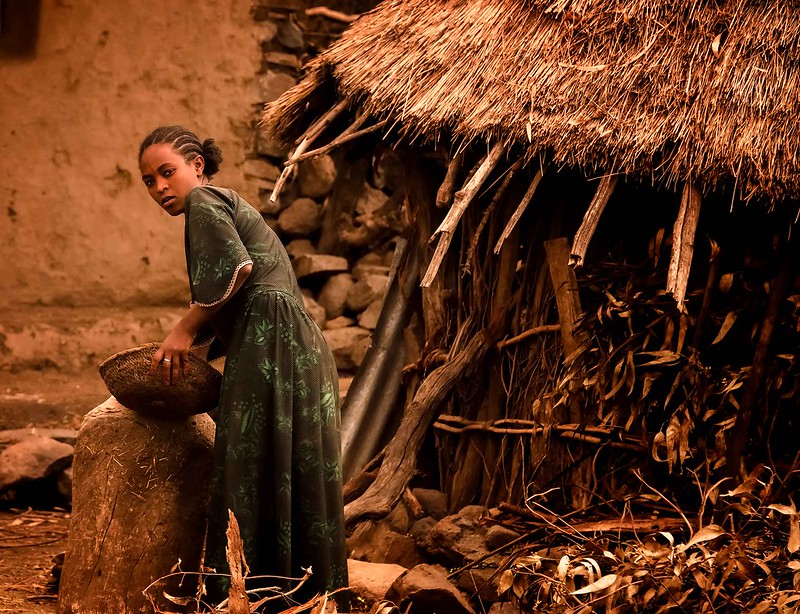7 Facts About Child Marriage in Africa

Child marriages have been occurring for thousands of years. While child marriage is more commonly seen between female children and much older men, child marriage is defined as marriages where either one or both partners are younger than the age of 18. According to UNICEF, Africa has the highest rate of child marriages in the world. Specifically, sub-Saharan Africa has the highest rates where every four in 10 girls are married before the age of 18. Within this region, the country of Niger has the highest child marriage rates, with 77% of girls married before the age of 18. Here are seven facts about child marriage in Africa.
7 Facts About Child Marriage in Africa
- Children marry as young as 7 and 8 years old. The U.N. estimates that every day around 37,000 girls under the age of 18 are married. Of the girls forced into marriage, one in three girls experience child marriage before the age of 18 and one in nine experience it before the age of 15. UNICEF estimates that if no change occurs, the rate of child marriages in Africa alone may double by 2050.
- Girls often experience suppressed education. Most girls who are in a child marriage do not get an education higher than the mandated primary education of grades one through nine. This is due to social stereotypes that categorize girls as domestic wives who stay in the home to cook, clean and bear children. Another reason is that most child marriages take place in poverty-stricken areas and they cannot afford to pay for an education or do not have access to education near them.
- Children involved in child marriages are at greater risk of domestic violence. A high percentage of girls in a child marriage experience domestic and sometimes sexual violence. According to the International Center for Research on Women (ICRW), girls who marry before the age of 18 are twice as likely to experience domestic violence when compared to girls who marry after the age of 18. Many girls cannot escape this violence because of poverty and the lack of education.
- Having a daughter is seen as a burden in Africa. Most child marriages take place in poverty-stricken areas where families consider daughters to be economic and financial burdens. Many families, wanting to make up for the money they put into raising a daughter, require a dowry for their daughter’s marriage. The high cost of a dowry means that most men will work for years to save up for a wife. As a result, most child marriages are between a young girl and a much older man.
- Child brides have a greater risk of contracting HIV and other STDs. Since men are typically much older when they marry a child bride, they tend to have had multiple partners before they are married. As a result, girls involved in child marriages are more susceptible to contracting HIV and other sexually transmitted diseases. Additionally, research found that many young people lack the proper knowledge of HIV and other STDs and safe sexual education. Sex education is a mandatory curriculum in Africa, but religious and cultural taboos prevent schools from properly teaching this curriculum. In 2015, the Department of Basic Education began developing lesson plans for grades seven through nine that properly educate children about safe sex and STDs.
- Many child brides face high-risk pregnancies. Since girls marry at such young ages, many girls have high-risk pregnancies due to their underdeveloped bodies. As a result, they often have a difficult childbirth. Additionally, pregnancy lessens the body’s immune system, leaving young girls easily susceptible to illnesses such as malaria. Malaria is harder to treat when one is HIV positive and can lead to death in young pregnant girls.
- Ultimately, child marriage violates human rights. Child marriages involving boys is significantly more rare than those involving girls. The primary difference in a marriage involving young boys is they do not pose the same health risks as girls. However, child marriages between both sexes take away a child’s basic human rights. In 1948, in an attempt to discourage child marriages, the U.N. declared child marriage an act against human rights, as stated in Article 16 of the Universal Declaration of Human Rights.
These seven facts about child marriage in Africa explain the difficulties young girls face every day. While child marriages around the world have been in a steady decline, Africa has been the slowest progressing area. According to the U.N., child marriages in Africa could actually continue to grow rather than decline. A continued growing awareness around the world helps to end child marriages. A group of girls in Africa started a petition to change the laws and raise the age of consent. So far, the petition has received over 245,000 signatures. Efforts like these continue to help bring an end to child marriages in Africa.
– Chelsea Wolfe
Photo: Flickr
